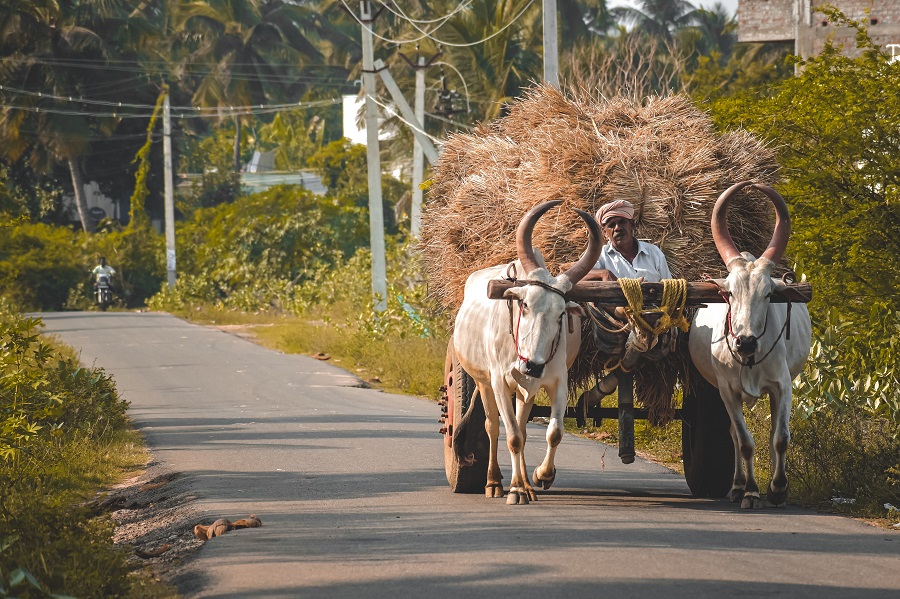The ubiquitous bullock carts are now absent from the rural picture

Published :
Updated :

Whenever someone thinks of rural Bengal, quite a few things come to mind. Vast fields, a lot of greenery, and last but not least, a bullock cart.
Bullock carts were so much part of Bengali folklore and popular imagination that their presence in the region of Bengal can be traced to every piece of fairy tale and country music. However, like much of the world, globalisation has caught Bangladesh up as well, and with time, carts are becoming few and far between.
In the past, carts were the only source of communication in rural Bengal. To go from one village to another and carry news from one place to another, the importance of carts was multifold, as they carried passengers and many different crops and grains, which were often taken to the local markets for wholesale selling.
Bankim Chandra Chattopadhyay, when acting as the Deputy Magistrate of Jashore, commuted from Kolkata to Jashore using bullock carts since there were no better means of communication.
However, the scenario started changing rapidly with the popularisation and availability of engine-driven vehicles in rural Bangladesh; nowadays, in rural areas, vans and auto-rickshaws also have engines.
Although bullock carts are often seen in some of the rural areas of Bangladesh, their presence in urban and suburban areas has become completely nonexistent, with them being almost semi-mythical to people growing up in these areas.
Carts have a long history in the Indian Subcontinent. Their presence in this area was estimated to have started in the northeastern part of the subcontinent, in the Indus Valley region, about 1600 to 1500 years before the birth of Christ. After that, the use of these carts started spreading across much of the subcontinent.
Bullock carts, despite almost becoming a relic of the past, are environmentally friendly vehicles, as no fuel is necessary to run them, and black fumes, which are extremely harmful to human health, are not emitted from them. As the speed of this vehicle almost entirely depended on the speed of the cattle, the possibility of accidents was quite low.
In the next few decades, it is quite likely that bullock carts will become completely extinct and will totally go out of use. Hence, it is essential to preserve this vehicle, which has a ubiquitous presence in the landscape and the folklore of rural Bengal.
kabirrassiqaziz@gmail.com


 For all latest news, follow The Financial Express Google News channel.
For all latest news, follow The Financial Express Google News channel.